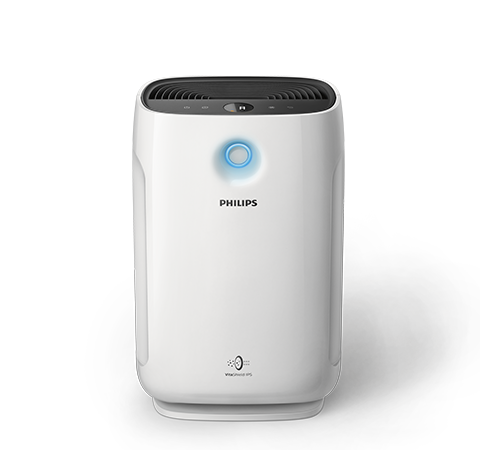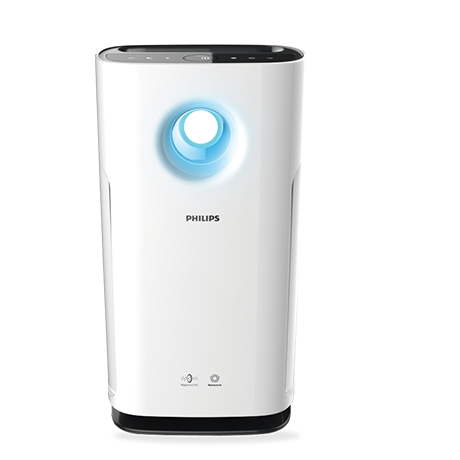Philips Air Purifier Series 2000
Removes 99.97% of ultrafine particles as small as 0.003 um, 800 times smaller than PM2.5
Why choose a Philips Air Purifier?
The Philips Air Purifier’s multi-layer filtration system is one reason why it’s so effective. First, a pre-filter removes large particles, then an active carbon filter removes odors and VOCs. Finally, a HEPA filter removes ultrafine particles as small as 0.003um, including PM2.5, dust, dust mites, common allergens, bacteria and viruses.* The result is a superior filtration system that provides cleaner air.
* From air that passes through the filter.
What does it filter?
Did you know that the air in your home can have 2 to 5 times more allergens and pollutants than outdoor air? Philips Air Purifiers capture and remove from the air 99.97% of all allergens that pass through. That’s pollen, dust mites, mold spores, pet dander, smoke, bacteria or viruses as small as 0.3 microns.
How to choose the right purifier for your room?
The effectiveness of an air purifier is measured by its clean air delivery rate, or CADR. That’s the purifier’s maximum airflow (how much does it process) times its efficiency (how much does it capture).
The higher the CADR, the better. But it doesn't guarantee the air purifier will be able to handle the room you place it in. That’s why we organize our air purifiers on this page according to the room size they suit — to help you make the right choices for your home and your family.
Reviews for Philips Air Purifiers
Superior purification
cleans more effectively
Powerful Pollution mode
continuously monitors & adjusts
Instant feedback
for peace of mind
Find the best air purifier for you
User reviews | ||
|---|---|---|
Recommended room size | ||
|
|
|
CADR (clean air delivery) | ||
|
|
|
Pollution mode | ||
|
|
|
Real time air quality feedback in color ring | ||
|
|
|
Real time air quality feedback in numbers | ||
|
|
|
Control & track air quality via app | ||
|
|
|
| | | |


